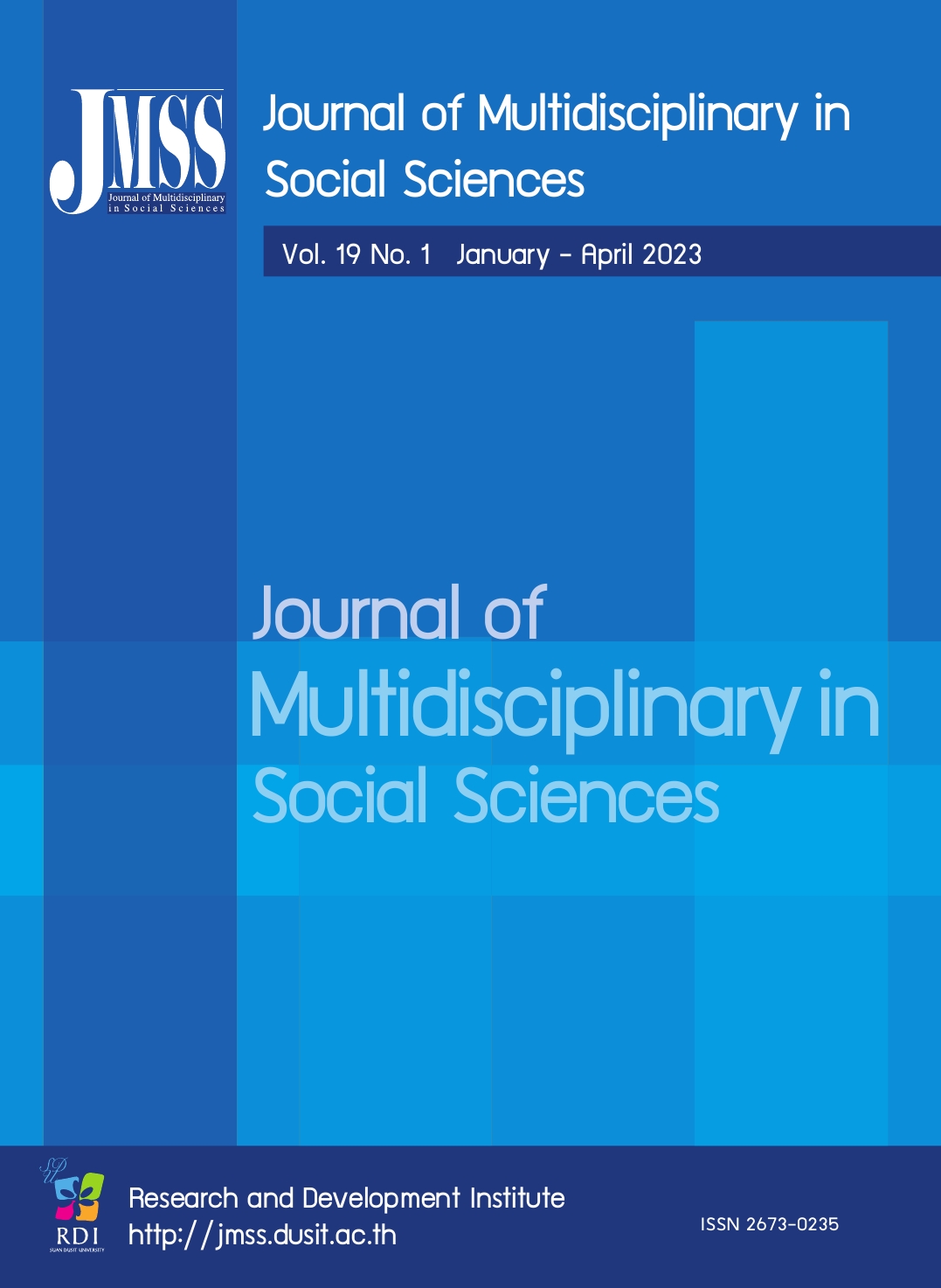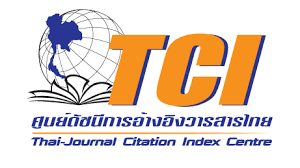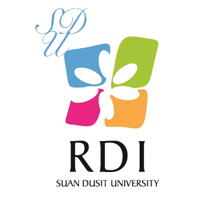The Study of Community Potential for Local Wisdom Product Development in U-thong, Suphanburi Province
Keywords:
Potential, Community enterprise, Product development, Local wisdomAbstract
This study aims to 1) classify community products according to local wisdom of community enterprises in U-thong district, 2) study the readiness for product development with local wisdom, 3) select the prototype of potential community enterprises for product development, 4) study the limitations and obstacles to product development with local wisdom, and 5) study the direction of community enterprises’ potential development for local wisdom product development. Qualitative data gathering is interviewing the key informants of involved government offices, local administrative organizations, community enterprises’ presidents, and focus groups are conducted among communities’ leaders and community enterprises’ members. The community products in U-thong are classified as processed agricultural products, organic products, farm animals, souvenirs, clothes, and household items. The potential factors of community enterprises, covering 13 sub-districts, total 105 villages, 20 villages were selected with their products linking to local wisdom and their identity. The results of the study of potential variables of community enterprises from relevant research findings and theoretical concepts, two prototypes of potential community enterprises were found; one is local wisdom products linked to ethnic cultural identity and another is organic agricultural products that are selected with qualified potential factors. The limitations and obstacles to product development with local wisdom is the lack of participation since most members are farmers and elderly people which has time and health constraints. The direction of community enterprises’ potential development is to learn for planning, and actual implementation of the plan with an emphasis on the principles “community owned and operated” and uses raw materials, resources, capital, labor in the community.
References
Bass, B. M., & Avolio, B. J. (1994). Transformational leadership development.Pola Alto, California: ConsultingPsychologists.
Bass, B.M., & Riggio, R. E. (2006). Transformational leadership. Mahwah, NJ: Lawrence Erlbaum Associates.
Brundage, D.H., & Mackeracher, D. (1980). Adult learning principles and their application to program planning. Toronto: The Ontario Institute for Studies in Education
Buasai, S. (2004).Localpower: A synthesis of community research. Bangkok: The Thailand Research Fund.
Buntham, P. Suphanburi Province. (2017, July 19). Interview
Chandang, V. (2013). The development for strengthenedcommunity management corresponding to sufficiency economy in the upper central provinces of Thailand. The Golden Teak (special). Chankrabi, S. U-Thong Ancient City Special Area Office. (2017, May 19).
Interview.
Cherdchan, C. Non-Toxic Asparagus Community Enterprise. (2017, July 19). Interview.Damrong Rajanubhab Institute. (2016). Blueprint and Action Plan to Drive Thailand 4.0. Retrieved March 3, 2018 from http://www.stabundamrong.go.th/web/download/newkm/thailand4.0.pdf
Janpla, J., Songsuwong, W., Kijkar, P., & Wongsaming, S. (2016). Development of Thai Song Dam woven fabric products to add value following the creative economy concept. Veridian E-journal, Silapakorn University, 9(2), 82-98.
Kongpetdit, C., & Chantuk, T. (2016). Change management:role of leadership and organizational communication. Veridian E-journal, Silapakorn University (Humanities, Social Sciences and Arts), 9(1), 895-919.
Krikruan, P. Thung Thong Sustainable Organic Agriculture Community Enterprise. (2017, November 22).Interview.
Makcharoen, P. (2019). Civil societies in Southeast Asia: The myths and limitations in supporting democracyauthors. Burapha Journal of Political Economy, 7(1),80-98.
Meeyaboon, K. (1994). The adaptation to the condition ofeconomic and social change of Laos Krang in Ba-an Kok, Supunburee province. Retrieved March 1, 2018 from http://www.sure.su.ac.th/xmlui/bitstream/__ /1624/fulltext.pdf?sequence=2&isAllowed=y
Munphet, K. Ban Yang Laos Weaving Community Enterprise (2017, July 19). Interview.
Ngamsakoo, R., & Phollawan, P. (2018). Knowledge and product development from Thai Song Dum’s NativeTextiles in Bandon Subdistrict, U-thong District,Suphanburi Province. Journal of CommunityDevelopment and Life Quality, 6(1), 176-187.
Office of the National Economic and Social Development Council. (2018). The Twelfth national economic andsocial development Plan (2017-2021). Retrieved January 9, 2018, from: https://www.nesdc.go.th/ewt_dl_link.php?nid=6422
Pakdeewong, P. (2018). The development education and Thai wisdom for shining up an innovator. Educational Management and Innovation Journal, 1(2), 91-113.
Pongnak, I., & Disatapunahu, S. (2015). The Community Identity of the Ancient Town of U-thong, Suphanburi Province. Veridian E-journal, Silapakorn University (Humanities, Social Sciences and Arts), 8(3), 511-523.
Pongpanich, S. Som Chan Community Enterprise. (2017, July 19). Interview.
Poungprayong, K., & Chantaranamchoo, N. (2013). The development approach of small and micro community enterprise processing and product group Samutsongkram Province. Silpakorn Educational Research Journal, 5(1), 108-120.
Promsaka Na Sakolnakorn, T., & Sungkharat. (2014).Development guidelines for small and microcommunity enterprises in Songkhla Lake Basin.Academic Journal of Humanities and Social Science Prince of Songkla University, Pattani Campus, 10(1),97-122.
Putnam, R. D. (1993). The prosperous community.TheAmerican Prospect, 4(13), 35–42.
Rooplor, R., Promtat, D., & Wongwiwitkul, W. (2013, July 15-16). Guidelines for the development ofsustainability and growth of community enterprises.The continual Report of the 5th RajamangalaUniversity of Technology Symposium. [Symposium].Bangkok, Thailand.
Songserm, C. Som Chan Community Enterprise. (2017, July 19). Interview.
Sorthananusak, N. (2016). Development of hand-woven product textile Thai Song Dam for commercial. Jour-nal of Fine Arts Research and Applied Arts, 3(1), 24-46.
Srimitree, M. (2016). Development of model and potential of community enterprise in cultural tourism according to local identity to tourists in Ubon Ratchathani province. Thai Hospitality and Tourism Journal, 11(2), 53-65.
Srisontisuk, S. (1994). The Sociology of community: principles of community study, analysis and work. Khon Kaen: KKU Printing House.
Suphanburi Provincial Office. (2018). History of Suphanburi. Retrieved January 2, 2018 from: https://ww1.suphanburi.go.th/ content/history
Tancharoen, S. (2018). Quality development guidelines for OTOP product of community enterprise in Muang District, Samutsongkhram Province. Lampang Rajabhat University Journal, 7(2), 155-166.
Wongsuwan, S., & Sanglerduthai, C. (2011). Roles of participation in community development of Tambol administration organizations’ members, chiefs of sub-districts, and heads of villages in Song Phi Nong district, Suphan BuriProvince. Silpakorn Educational Research Journal,2(2), 342-350.
Yibmantasiri, P., Puangmanee, J., Thong-ngarm, K., Chowsilpa, N., & Limnirunkul, B. (2000). Development process ofpesticide-free vegetable production systems in ChiangMai Province. Health Systems Research Institute (HSRI). Retrieved from https://kb. hsri.or.th/dspace/handle /11228/1692
Downloads
Published
How to Cite
Issue
Section
License

This work is licensed under a Creative Commons Attribution-NonCommercial-NoDerivatives 4.0 International License.








